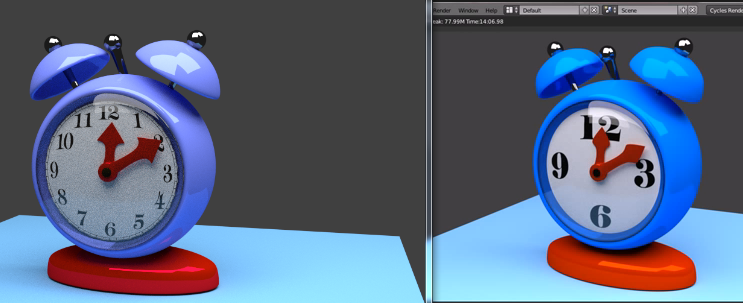I spent many recent evenings reading about 3D design and software. Then I decided to download some free software; first I tried Design Spark, then Sculptris, then Blender. Blender 2.69 seems to be the most powerful of the three, and unlike the other two, it hasn’t crashed on me yet.
A great thing about Blender seems to be tons of helpful tips contributed by its deep user base. I found this coffee cup tutorial from LittleWebHut.com’s YouTube channel. The speaker is very clear and precise, yet avoids being condescending. With much pausing and rewinding, I was able to complete both the cup…

…and the alarm clock tutorial in one evening:

Can’t wait to learn more!